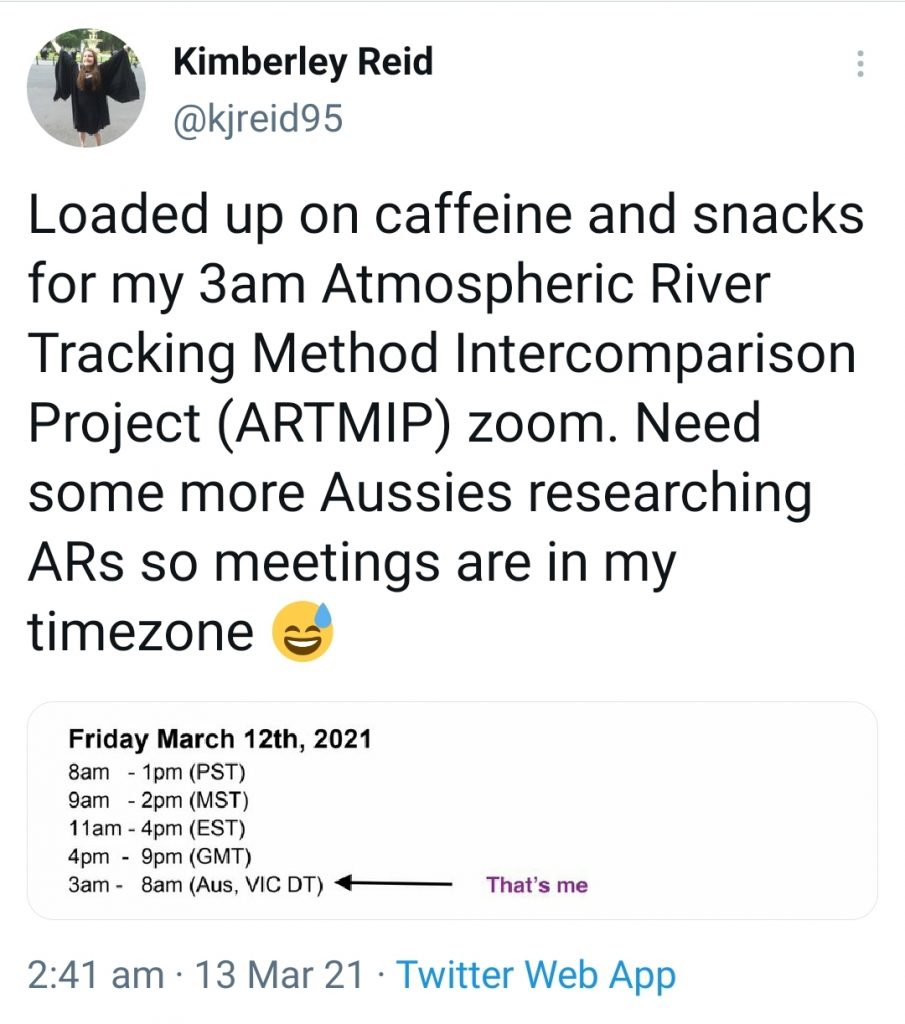Picture: A June 22 satellite image of an atmospheric river forming over Australia. Credit: Himawari 8 satellite.
by Karla Fallon
An interesting conversation at Kim Reid’s first AMOS Conference led not only to a new PhD topic but also to her taking part in an international collaborative research project.
During Kim’s Masters’ research on northwest cloud bands, she was introduced to the concept of atmospheric rivers at the 2018 AMOS-International Conference on Southern Hemisphere Meteorology and Oceanography, which prompted her to investigate them further as part of her PhD. While atmospheric rivers were not much discussed in Australia at the time, the science around them was an internationally emerging field with clear research gaps to be filled.
Towards the end of 2019, Kim submitted her first paper relating to the method of identifying atmospheric rivers. The reviewers of that paper alerted her to an international project working on this problem. The Atmospheric River Tracking Method Intercomparison Project (ARTMIP). The project was formed with the goal of understanding and quantifying the uncertainties in atmospheric-river (AR) science based on the choice of detection/tracking methodology.

Kim contacted one of ARTMIP’s co-chairs, Christine Shields (NCAR), after an introduction by Julie Arblaster (CI and a member of Kim’s PhD supervision panel). Kim joined the project in time for its Tier 2 study and was in fact the only Southern Hemisphere representative for Tier 2. This study required Kim to run her detection algorithms on multiple different datasets – MERRA, ERA5 and JRA, which was a big learning curve. Not only did she have to learn how to create NetCDFs and manage the huge ERA5 dataset, but also wrangle the information into different required formats to suit the needs of the international group. For example, while Kim was accustomed to using the European style of plotting from 0 to 360 degrees longitude, the US format is to plot from -180 to 180 degrees, so all of the data had to shifted be to the USA format. There was much trial and error (including having the data upside down at one point) and it was hard to keep going, but thanks to lots of chats with Scott Wales (CMS) and a determination to finish, Kim managed to complete the analysis and contribute to the project. There were also challenges around participating in the meeting discussions due to the time zone differences, with Kim often finishing the meetings as the sun rose outside her window.
Kim has now left the ARTMIP project to focus on her PhD, however, she still feels the benefits of being part of the international network. A paper is currently being written based on the Tier 2 project, with Kim as a co-author, and she will also be a co-author on another paper to be submitted with an ARTMIP colleague at Indiana University about the March flooding event in NSW and climate change.
Being able to take part in these international conversations has influenced the direction of Kim’s PhD with greater insight into the emerging research perspectives on atmospheric river science.
